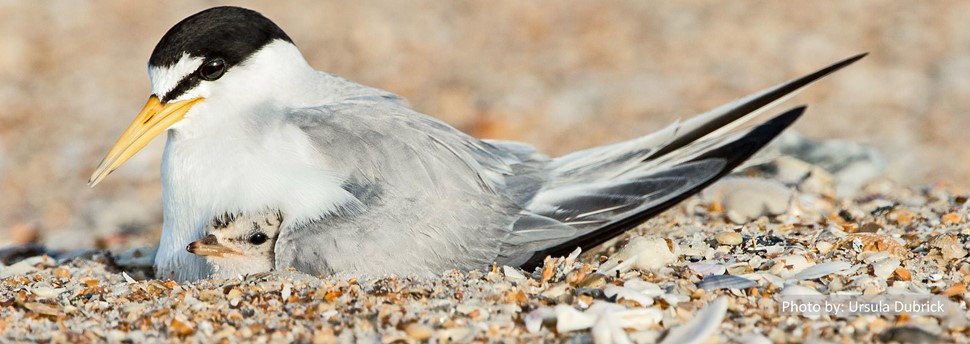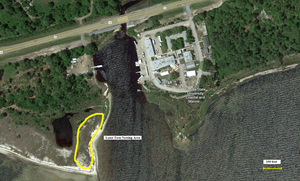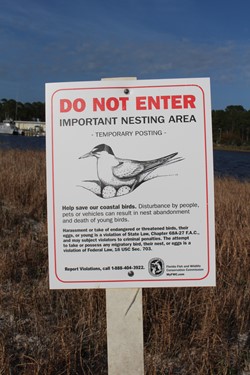
Least terns (Sternula antillarum), the smallest of American terns, rely on sandy beaches throughout Florida for nesting sites. Due to their small size and their tendency to concentrate in small areas during nesting and migration, they are especially vulnerable to human disturbance, so it is important to do what we can to make sure these birds have the opportunity to build nests that are not disturbed. Least terns’ nests are shallow scrapes, sometimes lined with pebbles, grass, and debris. Because of increased coastal development, these terns have adapted to nesting on rooftops near sandy shores. If you see a nest, it is important not to disturb it. Keep a sharp eye out when walking on nearby beaches, particularly in the spring and summer months. Least terns’ nesting season is April-August, prime season in the Florida panhandle being from May-July, with eggs hatching in about 20 days.

The FSUCML has hatched (pun intended) a plan to help these birds. Nestled on the boat basin side of the marine lab along the shoreline are gravel and shell covered areas that make excellent nesting sites for these birds. Chris Matechik, FSUCML Marine Research Technician, with the guidance of John Murphy from Audubon Florida, and Justin Davis from the Florida Fish and Wildlife Conservation Commission, has taken action to provide the terns with safe nesting habitat. Chris has thinned vegetation to open up more sandy and gravelly areas for the birds to build nests on, and has placed warning signs on these areas of prime nesting habitat for the terns.

We hope to see nesting birds in the coming weeks and months. Stay tuned!
For more information about Least terns, visit My FWC.

